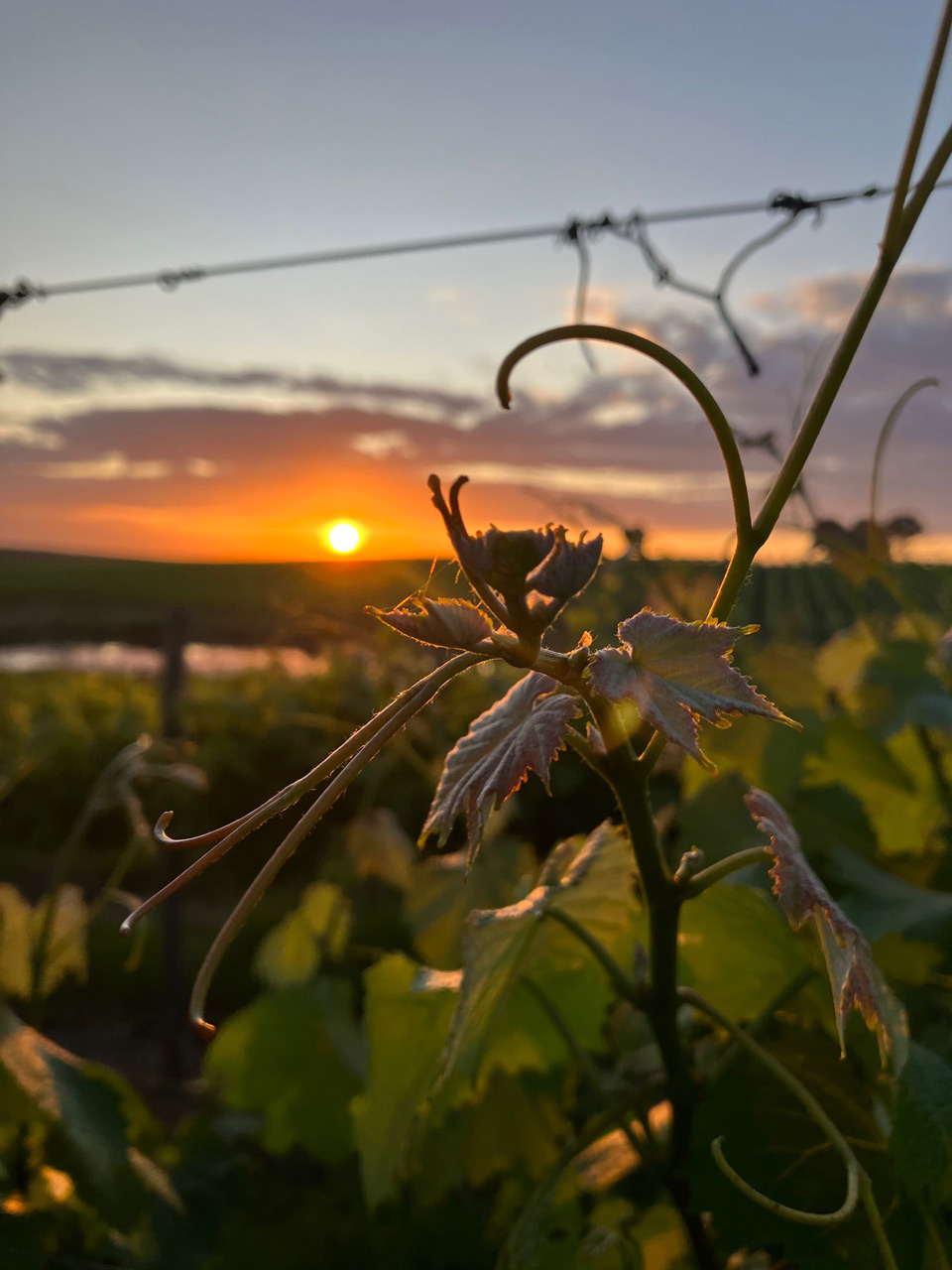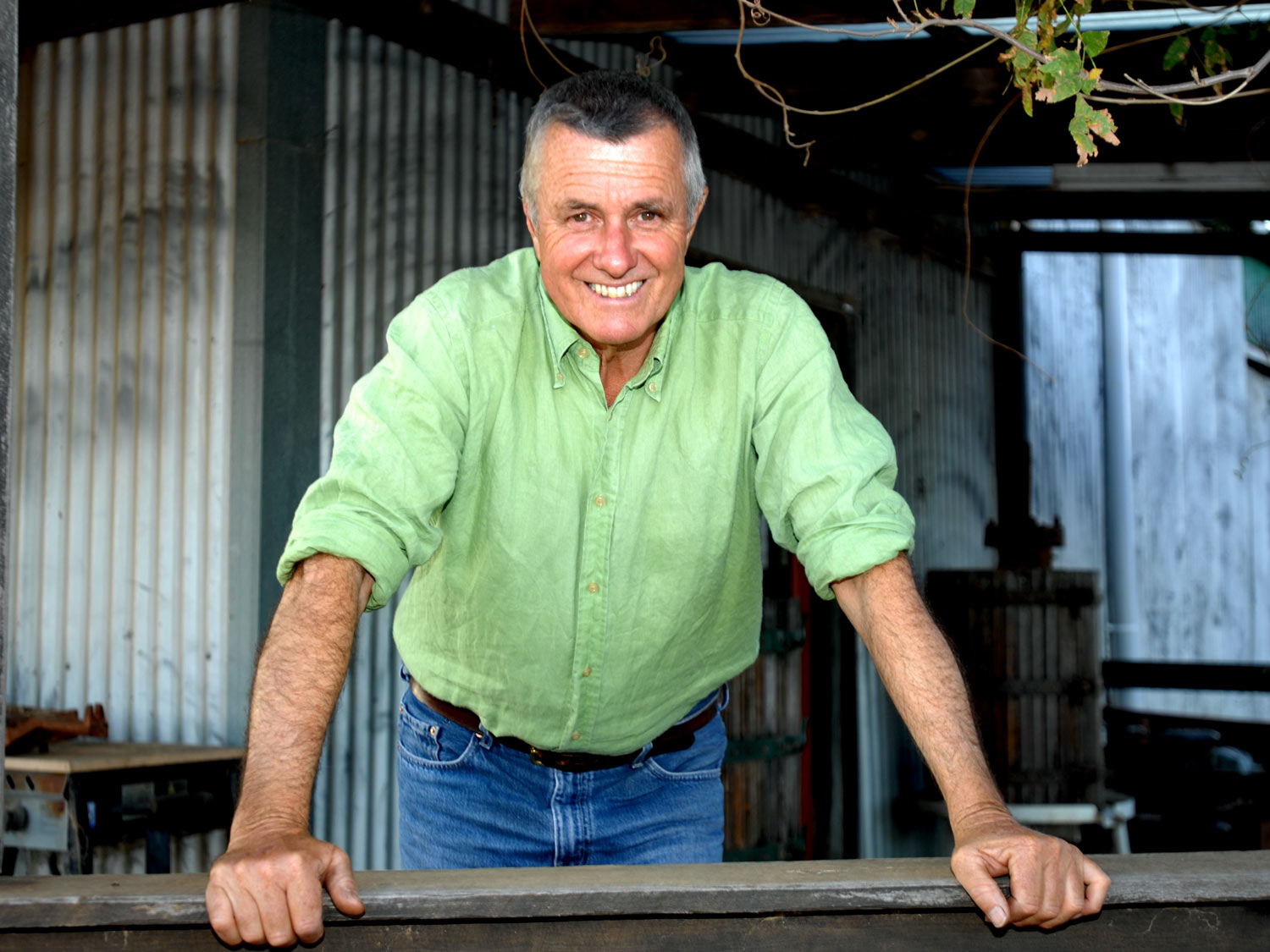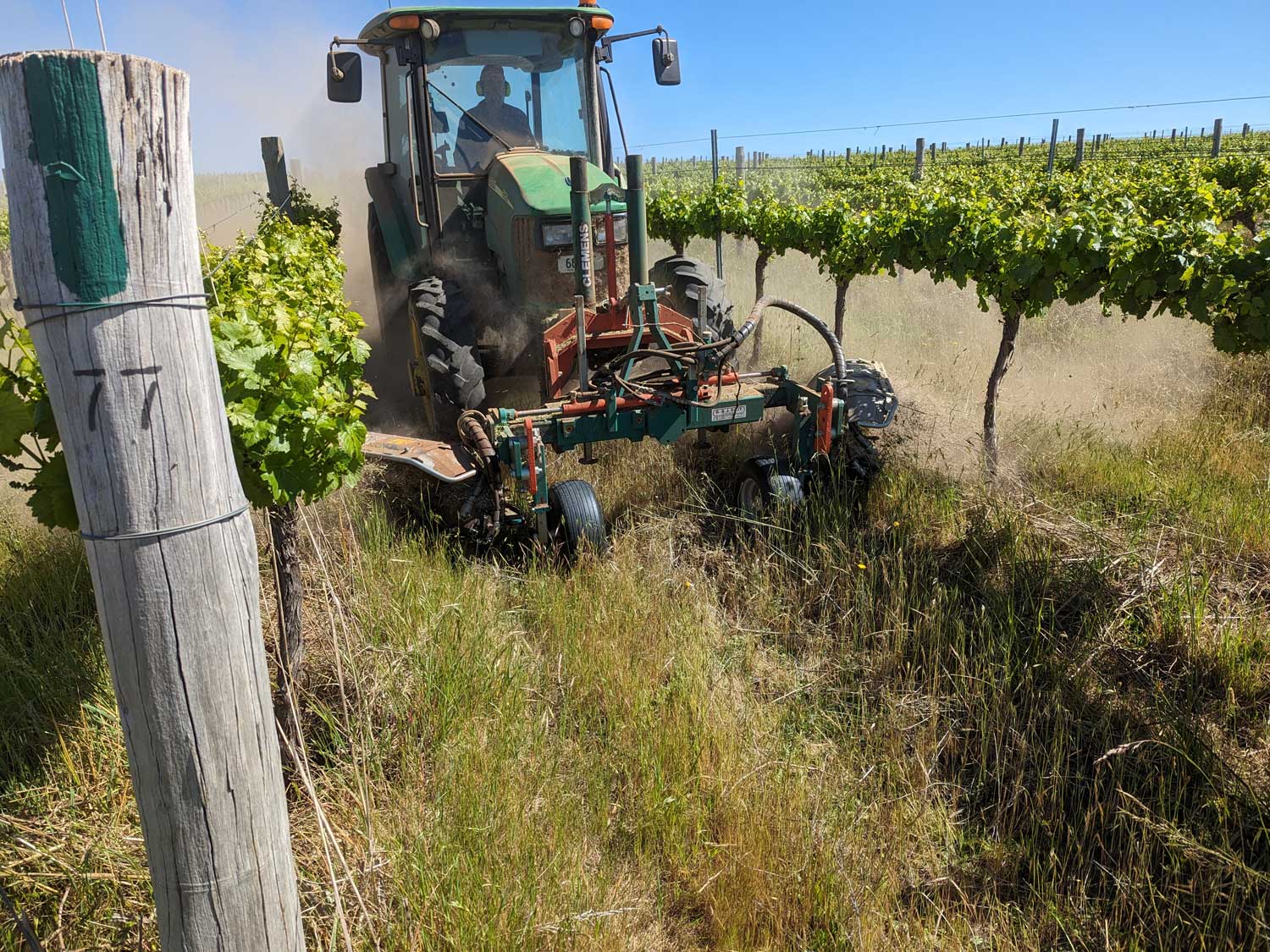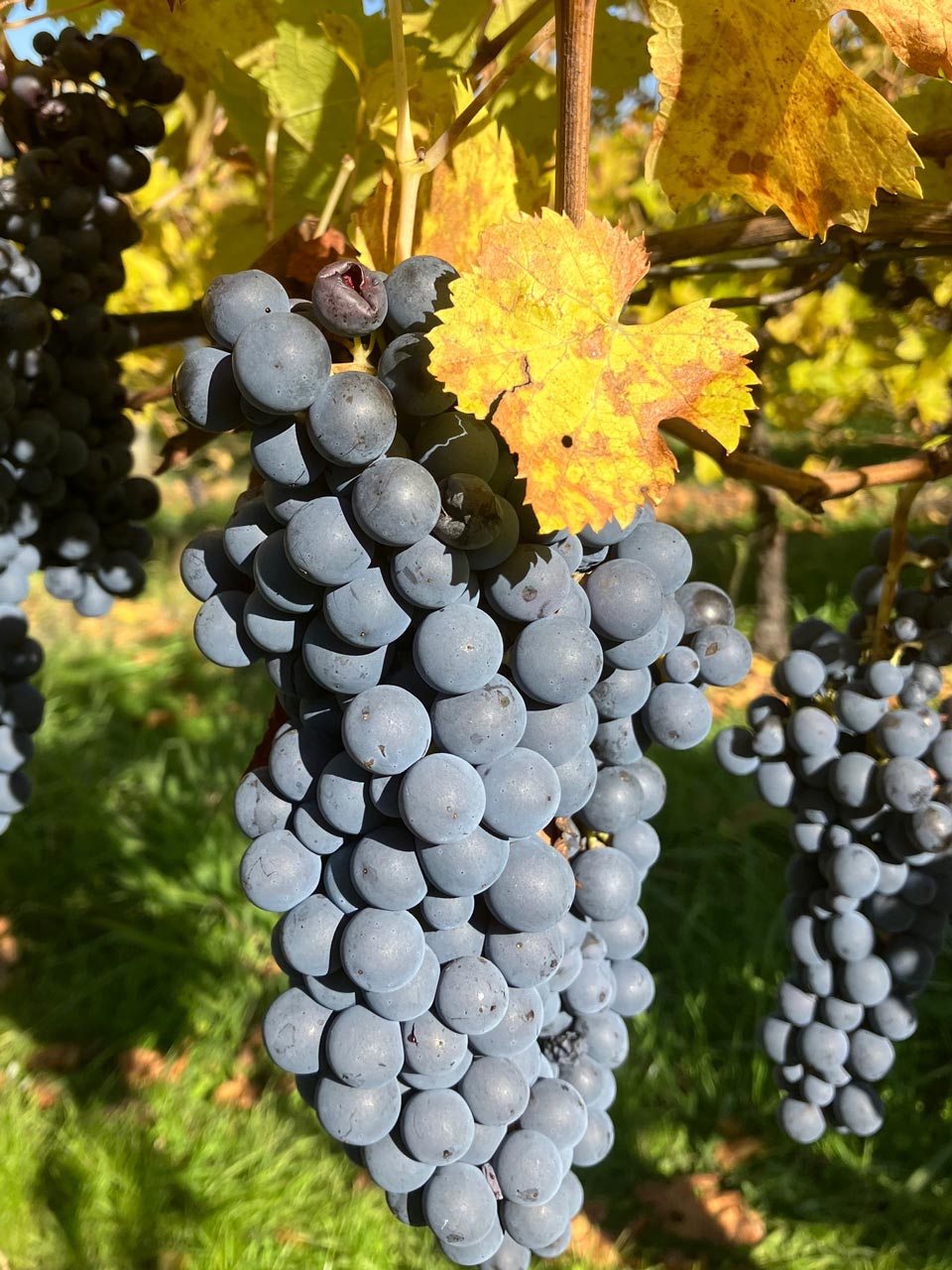Perched at 600 metres in the elevated terrains of Hilltops NSW, the Freeman Altura Vineyard stands as a beacon of grapevine diversity. Spearheaded by the visionary Dr. Brian Freeman, this vineyard encapsulates a pioneering spirit. With plantings ranging from 1975 to the present, the vineyard spans 28 hectares, showcasing 20 varieties at last count, from the classics including chardonnay and shiraz, to Italian stars nebbiolo and sangiovese, to the little known and obscure – aleatico, furmint, harslevelu, rondinella – among others. The Freeman Altura Vineyard is just one of several Freeman vineyards within a 10km radius, with just 1% of the Freeman grape production selected for their own branded products which range from $25 through to $95 per wine. The rest of their grape production is sold to over 15 other winemakers, including Hungerford Hill, Mada, Nick Spencer, Lerida Estate, Charles Sturt, Mercer Wines, Brokenwood, and Ravensworth.
Dr Brian Freeman has worked in the viticulture industry since the 1990s as a lecturer at Charles Sturt University in Wagga Wagga. He bought the 28-hectare Altura vineyard in the Hilltops region in 2005 which features cool elevated slopes, significant summer diurnal temperature range, mellow autumn weather, and free draining red granitic loam soils.
Freeman describes the geology and soil that has evolved here over time, and how it serves the vines, “The vineyard sits on a large granite rock. This rock, about 100 km long north to south, is the reason the Murrumbidgee River – after passing through Canberra – goes south before going west at Gundagai. On top of the rock is a 15-metre-deep layer of decomposed granite, which is a coarse sand. On the leeward side of the hills, red dust from the centre of Australia has deposited over the last 5 million years. This forms a clay layer and is a better water holding soil. The bedrock ensures the water stays within this 15-metre depth.”
While Hilltops is perhaps most frequently recognised for chardonnay and shiraz, Freeman has been a pioneer of new varieties in the region. “The Hilltops region has experienced climate variation and the future weather patterns are unpredictable. That in mind, at Freeman Vineyards we have planted more heat tolerant varieties like fiano, and manage the canopies to protect the vines.”
A champion of varietal diversity, the current grapevine mix at the Altura Vineyard includes whites: aleatico, chardonnay, fiano, furmint, gewurztraminer, harslevelu, pinot grigio, prosecco, riesling, and sauvignon blanc. And for the reds: cabernet sauvignon, shiraz, tempranillo, pinot noir, sangiovese, nebbiolo, corvina, rondinella, graciano, and tinta cao.
Beyond being a leader in finding climate appropriate grapes for the Hilltops, Freeman points to other efforts in sustainable viticulture, with sowing sub-clover in between vine rows as well as promoting certain natural grasses. They also employ high cordon trellising to accommodate a flock of 300 Wiltipoll shedding sheep which are grazed year-round acting as “weed-eaters” and “mobile fertiliser dispensers”.
Birds attracted to ripe grapes are common pests for grape growers. Freeman has particular problems with starlings, though precise measures have been taken. “Sheoak trees (were) planted strategically to block the line of sight of starlings and a flock of specially bred white pigeons have been used to deter starlings.”
These examples, alongside minimal irrigation use and the eschewal of botrytis sprays since 2011, showcase Freeman’s commitment to enhancing vineyard health and fruit quality, along with his deep understanding of the land.
Prior to 1975, the Freeman Altura Vineyard was a cherry and plum orchard. In the Prunevale area, as the name suggests, plums were processed into prunes to ship to diggers in WWI. The region was already established as prime horticulture land. In fact the wild yeast on these locally dried prunes is still being cultivated and used in the winemaking process.
Innovative techniques, such as using the indigenous ‘Prunevale Princess’ yeast for fermentation, underscore Freeman’s novel approach to winemaking. This yeast, evolved on local prunes, can ferment high-sugar wines without issue, contributing to the unique character of Freeman’s dessert and dried grape wines.
Freeman describes how this population of yeast is particular to their property, which uniquely contributes to the character of their fermented wine, “Prunevale is a locality on the ridge between Young and Harden that originated after WWI as part of the government’s plan to resettle Diggers after the wars. They were given 50 acres, a small 2-bedroom timber cottage, and fruit trees to plant. In Prunevale, they were given plum trees to produce fresh and dried prunes ‘to keep the British Empire regular.’ They failed on both counts!”
“Our vineyard in Prunevale is located on several of these settler blocks that have been amalgamated, and apart from three trees, the plum orchards gave way to vineyard rows. A unique advantage derives from the ‘Prunevale Princess’ a very special indigenous yeast capable of fermenting intense, higher alcohol wines like Freeman Secco (a 50/50 blend of rondinella and corvina) and Freeman Robusta (100% corvina). This yeast is said to have evolved over hundreds of plum harvests in the hamlet’s dehydrator and prune sheds originally established to dry/store plums for prunes. The role of the Princess is especially significant in these two red wines and Freeman Dolcino, a dessert wine made from viognier.”






